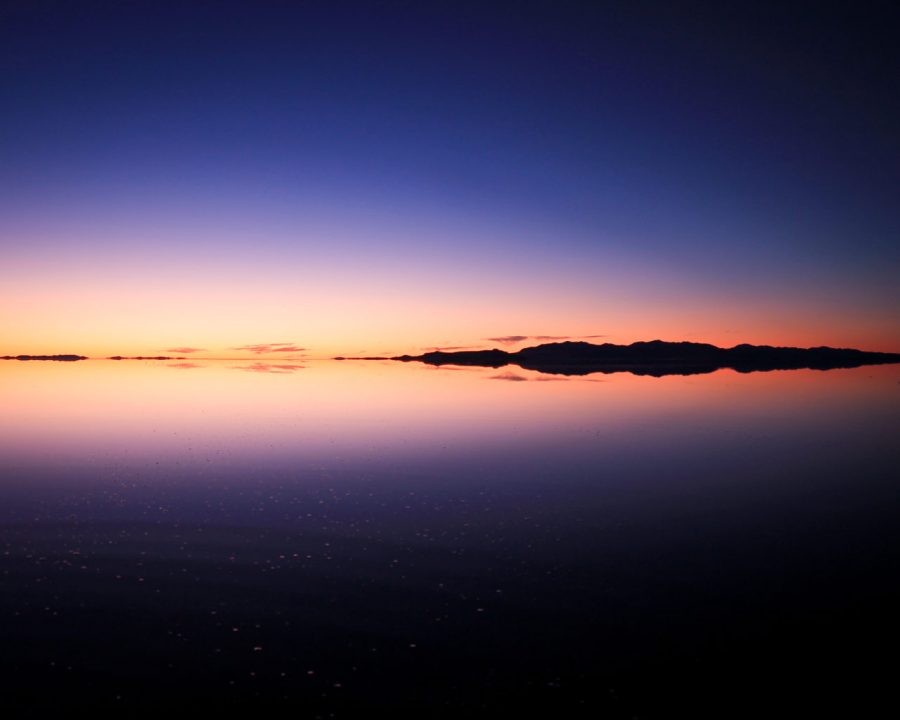Many scientists believe the United States will experience a serious dilemma in the near future — a severe lack of water. As the number of people in the U.S. rises, increasingly more water is going down the drain. In Utah alone, the population is expected to double by the year 2060.
In response to rising demand for water, the Utah State Legislature is considering a proposal to build several new dams within the Bear River watershed area, a raw water pipeline system to West Haven Water Treatment Plant and a second pipeline to deliver water from West Haven to Salt Lake, Weber and Davis counties. According to the proposal, it is believed that Utah residents will need the water beginning in 2035. If the legislation is passed, construction will begin within the next couple of years. The total cost of the project would be around $1.5 billion and is expected to divert 50 percent of the water that flows into the Great Salt Lake annually from its tributaries.
Local environmental activists are worried that diverting water could have catastrophic impacts on ecosystems surrounding the Great Salt Lake. One of the potential effects of the project could be an increase in air particulates during the times of the year when Utah’s inversion is the worst.
“As an air quality issue and a general survival issue, it is essential at this point not to dewater the Great Salt Lake,” said Linda Johnson, a spokesperson for the organization Breathe Utah.
In addition to concerns about air quality, Johnson and Breathe Utah worry that lowering the range of water in the Great Salt Lake could be detrimental to water availability in the long run. They argue that a smaller Great Salt Lake would result in the loss of a weather phenomenon called the “lake effect,” which increases the amount of snow in the Wasatch Mountains when cold fronts blow across the unfrozen lake surface and pick up moisture that falls later as snow.
According to Johnson, “That snow produces most of the water we use during the year and it becomes streamflow and aquifer recharge. The more surface area there is of the Great Salt Lake, the better this mechanism works.”
Breathe Utah believes that the best way to increase the water supply is to cut down on water waste, rather than lowering water levels and partially draining one of the largest wetlands and few saline lakes in the world. If large portions of the Great Salt Lake dry up, the air of surrounding residential areas could be polluted by toxic saline dust.
“According to the Utah Division of Air Quality wind blown dust can significantly worsen air quality by increasing the amount of fine particulate matter in the air we breathe,” said Jennifer Shah, an instructor specializing in rivers, ecosystems and air in the Environmental and Sustainability Department at the U. “Fine particulate matter can aggravate individuals with respiratory problems, such as asthma and lung cancer, and make otherwise healthy individuals more susceptible to respiratory illness.”
The Salt Lake Valley occasionally experiences high wind events that could prove disastrous to the respiratory health of citizens in this area, said Shah. The Great Salt Lake is of particular concern as well, because it is relatively shallow and broad. If there is low water availability, it could expose large areas of sediment.
Similar situations at Owens Lake in California and the Aral Sea in Russia resulted in catastrophic air quality damage.
“Utah is expected to double its population within the next 25-30 years,” said Shah. “Providing clean water to this growing population may prove to be a challenge, especially since Utah is the second driest state in the country. However, Utah has one of the highest per capita usage of water in the nation, low water costs and a very conservative tiered water pricing system. Hence, there are several policy and behavioral change options that could provide water for a greater number of people without deteriorating air quality.”
Currently, a lot of Utah’s water goes to agriculture and watering bluegrass lawns in the summer. The suggestion of approaching water issues with a lens of conservation has been adopted by a number of other Western states through turf buy-back programs, subsidized replacement of inefficient water appliances, xeriscaping and rain water harvesting.
“I don’t know about you, but walking around campus in the inversion is not something that I enjoy, and honestly, I cannot even imagine it getting any worse,” said Jayla Lundstrom, a student at the U who is lobbying against the Bear River Pipeline Project.
Lundstrom, a student activist and member of the student group U of U Water Warriors, believes that if students care about Utah’s air quality and water conservation, they should join her in petitioning the Utah State Legislature to reject the plan by contacting their local legislators.
Shah believes that reaching out to lawmakers can be an effective way to fight the project.
“A cornerstone of American democracy is the ability to make one’s concerns known to policy makers in a civil, peaceful manner,” said Shah. “I know from personal experience that policy makers at several levels of government are often amenable to constituent concerns, particularly if similar concerns are voiced by many constituents. Opposing viewpoints are welcome, especially if they include constructive alternative ideas.”





















Lynn de Freitas, Executive Director FRIENDS of Great Salt Lake • Mar 2, 2017 at 6:09 pm
Great piece on an extremely timely issue. Thanks for thinking of Great Salt Lake and for helping our community to better understand how important it is that we think very carefully about our relationship with the Lake today and tomorrow as we reckon with projected population growth in the second driest state in the nation.
Great Salt Lake generates $1.3 B annually to the state and regional economies from its important ecosystem services. But it is also hemispherically significant to millions of migratory birds that rely on it for resting, nesting and staging during migration. The Lake belongs to all of us which means that we all have a responsibility as stewards to sustain it for generations to come. Your article will certainly help us think about this more seriously. And thanks Breathe Utah. You rock!!
In saline,
Lynn
Linda Johnson • Mar 2, 2017 at 1:51 pm
Thank you for a really comprehensive discussion that hit on all the salient points about the Bear River diversions and the impact of the Great Salt Lake on our environment. If it continues to shrink you really won’t like the air you get to breathe. Not just dust will be in our air, but all sorts of heavy metals that are mixed into the sediments now safely under the water. Yuck!